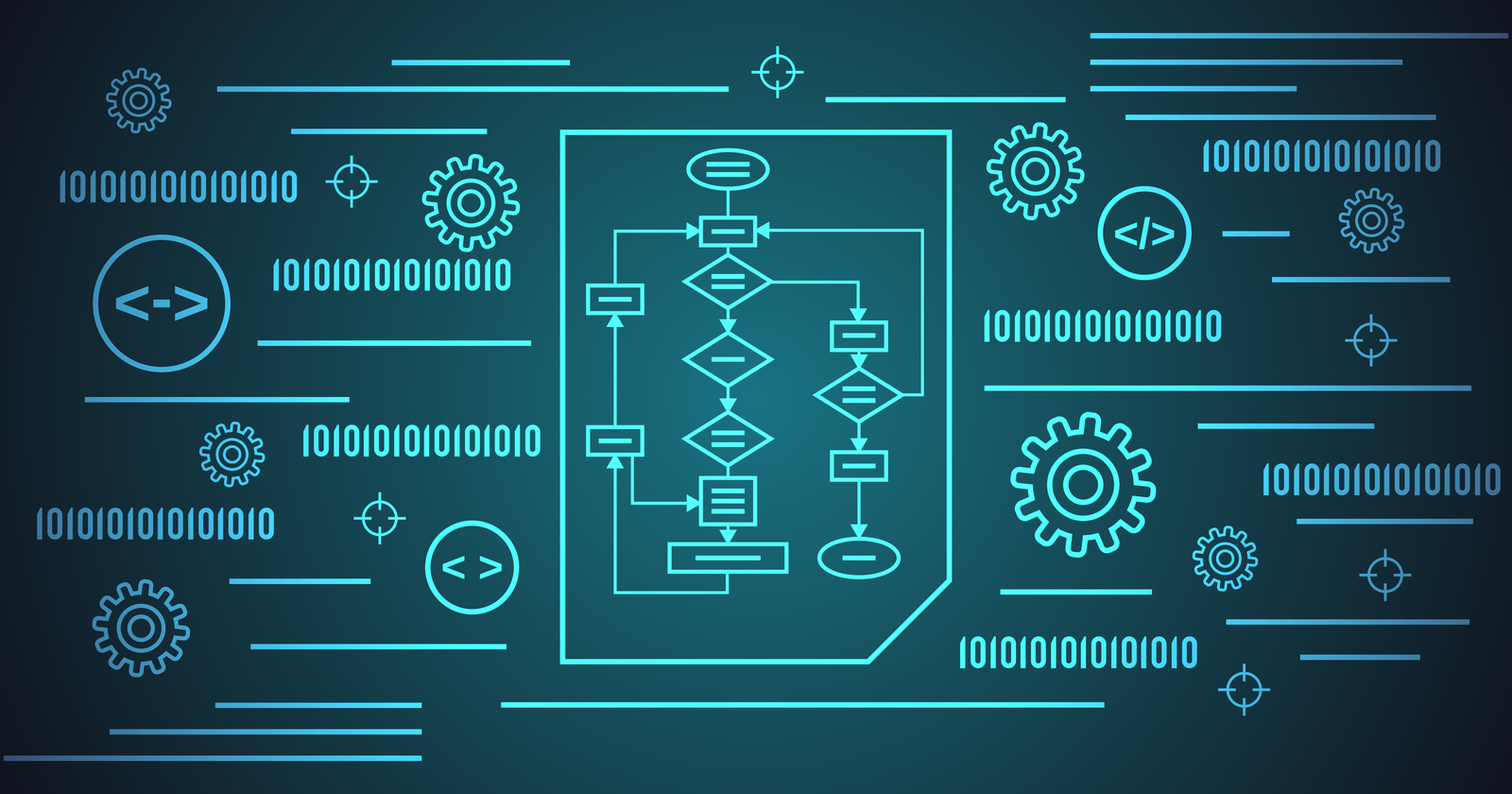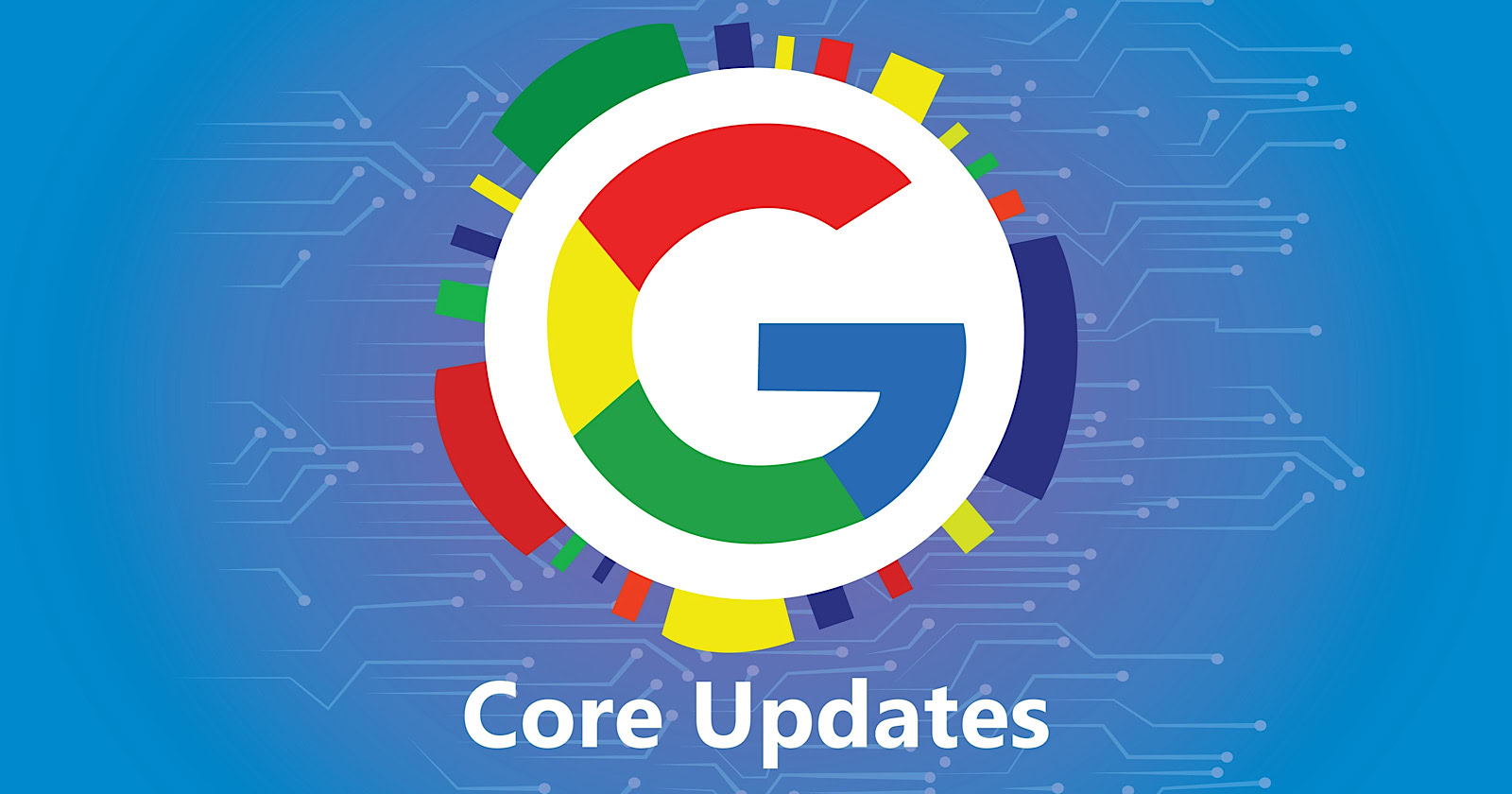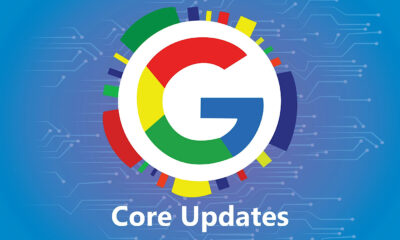SEO
What Is a Google Broad Core Algorithm Update?

When Google announces a broad core algorithm update, many SEO professionals find themselves asking what exactly changed (besides their rankings).
Google’s acknowledgment of core updates is always vague and doesn’t provide much detail other than to say the update occurred.
The SEO community is typically notified about core updates via the same standard tweets from Google’s Search Liaison.
There’s one announcement from Google when the update begins rolling out, and one on its conclusion, with few additional details in between (if any).
This invariably leaves SEO professionals and site owners asking many questions with respect to how their rankings were impacted by the core update.
To gain insight into what may have caused a site’s rankings to go up, down, or stay the same, it helps to understand what a broad core update is and how it differs from other types of algorithm updates.
After reading this article you’ll have a better idea of what a core update is designed to do, and how to recover from one if your rankings were impacted.
So, What Exactly Is A Core Update?
First, let me get the obligatory “Google makes hundreds of algorithm changes per year, often more than one per day” boilerplate out of the way.
Many of the named updates we hear about (Penguin, Panda, Pigeon, Fred, etc.) are implemented to address specific faults or issues in Google’s algorithms.
In the case of Penguin, it was link spam; in the case of Pigeon, it was local SEO spam.
They all had a specific purpose.
In these cases, Google (sometimes reluctantly) informed us what they were trying to accomplish or prevent with the algorithm update, and we were able to go back and remedy our sites.
A core update is different.
The way I understand it, a core update is a tweak or change to the main search algorithm itself.
You know, the one that has between 200 and 500 ranking factors and signals (depending on which SEO blog you’re reading today).
What a core update means to me is that Google slightly tweaked the importance, order, weights, or values of these signals.
Because of that, they can’t come right out and tell us what changed without revealing the secret sauce.
The simplest way to visualize this would be to imagine 200 factors listed in order of importance.
Now imagine Google changing the order of 42 of those 200 factors.
Rankings would change, but it would be a combination of many things, not due to one specific factor or cause.
Obviously, it isn’t that simple, but that’s a good way to think about a core update.
Here’s a purely made up, slightly more complicated example of what Google wouldn’t tell us:
“In this core update, we increased the value of keywords in H1 tags by 2%, increased the value of HTTPS by 18%, decreased the value of keyword in title tag by 9%, changed the D value in our PageRank calculation from .85 to .70, and started using a TF-iDUF retrieval method for logged in users instead of the traditional TF-PDF method.”
(I swear these are real things. I just have no idea if they’re real things used by Google.)
For starters, many SEO pros wouldn’t understand it.
Basically, it means Google may have changed the way they calculate term importance on a page, or the weighing of links in PageRank, or both, or a whole bunch of other factors that they can’t talk about (without giving away the algorithm).
Put simply: Google changed the weight and importance of many ranking factors.
That’s the simple explanation.
At its most complex form, Google ran a new training set through their machine learning ranking model and quality raters picked this new set of results as more relevant than the previous set, and the engineers have no idea what weights changed or how they changed because that’s just how machine learning works.
(We all know Google uses quality raters to rate search results. These ratings are how they choose one algorithm change over another – not how they rate your site. Whether they feed this into machine learning is anybody’s guess. But it’s one possibility.)
It’s likely some random combination of weighting delivered more relevant results for the quality raters, so they tested it more, the test results confirmed it, and they pushed it live.
How Can You Recover From A Core Update?
Unlike a major named update that targeted specific things, a core update may tweak the values of everything.
Because websites are weighted against other websites relevant to your query (engineers call this a corpus) the reason your site dropped could be entirely different than the reason somebody else’s increased or decreased in rankings.
To put it simply, Google isn’t telling you how to “recover” because it’s likely a different answer for every website and query.
It all depends on what everybody else trying to rank for your query is doing.
Does every one of them but you have their keyword in the H1 tag? If so then that could be a contributing factor.
Do you all do that already? Then that probably carries less weight for that corpus of results.
It’s very likely that this algorithm update didn’t “penalize” you for something at all. It most likely just rewarded another site more for something else.
Maybe you were killing it with internal anchor text and they were doing a great job of formatting content to match user intent – and Google shifted the weights so that content formatting was slightly higher and internal anchor text was slightly lower.
(Again, hypothetical examples here.)
In reality, it was probably several minor tweaks that, when combined, tipped the scales slightly in favor of one site or another (think of our reordered list here).
Finding that “something else” that is helping your competitors isn’t easy – but it’s what keeps SEO professionals in the business.
Next Steps And Action Items
Rankings are down after a core update – now what?
Your next step is to gather intel on the pages that are ranking where your site used to be.
Conduct a SERP analysis to find positive correlations between pages that are ranking higher for queries where your site is now lower.
Try not to overanalyze the technical details, such as how fast each page loads or what their core web vitals scores are.
Pay attention to the content itself. As you go through it, ask yourself questions like:
- Does it provide a better answer to the query than your article?
- Does the content contain more recent data and current stats than yours?
- Are there pictures and videos that help bring the content to life for the reader?
Google aims to serve content that provides the best and most complete answers to searchers’ queries. Relevance is the one ranking factor that will always win out over all others.
Take an honest look at your content to see if it’s as relevant today as it was prior to the core algorithm update.
From there you’ll have an idea of what needs improvement.
The best advice for conquering core updates?
Keep focusing on:
- User intent.
- Quality content.
- Clean architecture.
- Google’s guidelines.
Finally, don’t stop improving your site once you reach Position 1, because the site in Position 2 isn’t going to stop.
Yeah, I know, it’s not the answer anybody wants and it sounds like Google propaganda. I swear it’s not.
It’s just the reality of what a core update is.
Nobody said SEO was easy.
More resources:
Featured Image: Ulvur/Shutterstock
SEO
Google March 2024 Core Update Officially Completed A Week Ago

Google has officially completed its March 2024 Core Update, ending over a month of ranking volatility across the web.
However, Google didn’t confirm the rollout’s conclusion on its data anomaly page until April 26—a whole week after the update was completed on April 19.
Many in the SEO community had been speculating for days about whether the turbulent update had wrapped up.
The delayed transparency exemplifies Google’s communication issues with publishers and the need for clarity during core updates
Google March 2024 Core Update Timeline & Status
First announced on March 5, the core algorithm update is complete as of April 19. It took 45 days to complete.
Unlike more routine core refreshes, Google warned this one was more complex.
Google’s documentation reads:
“As this is a complex update, the rollout may take up to a month. It’s likely there will be more fluctuations in rankings than with a regular core update, as different systems get fully updated and reinforce each other.”
The aftershocks were tangible, with some websites reporting losses of over 60% of their organic search traffic, according to data from industry observers.
The ripple effects also led to the deindexing of hundreds of sites that were allegedly violating Google’s guidelines.
Addressing Manipulation Attempts
In its official guidance, Google highlighted the criteria it looks for when targeting link spam and manipulation attempts:
- Creating “low-value content” purely to garner manipulative links and inflate rankings.
- Links intended to boost sites’ rankings artificially, including manipulative outgoing links.
- The “repurposing” of expired domains with radically different content to game search visibility.
The updated guidelines warn:
“Any links that are intended to manipulate rankings in Google Search results may be considered link spam. This includes any behavior that manipulates links to your site or outgoing links from your site.”
John Mueller, a Search Advocate at Google, responded to the turbulence by advising publishers not to make rash changes while the core update was ongoing.
However, he suggested sites could proactively fix issues like unnatural paid links.
“If you have noticed things that are worth improving on your site, I’d go ahead and get things done. The idea is not to make changes just for search engines, right? Your users will be happy if you can make things better even if search engines haven’t updated their view of your site yet.”
Emphasizing Quality Over Links
The core update made notable changes to how Google ranks websites.
Most significantly, Google reduced the importance of links in determining a website’s ranking.
In contrast to the description of links as “an important factor in determining relevancy,” Google’s updated spam policies stripped away the “important” designation, simply calling links “a factor.”
This change aligns with Google’s Gary Illyes’ statements that links aren’t among the top three most influential ranking signals.
Instead, Google is giving more weight to quality, credibility, and substantive content.
Consequently, long-running campaigns favoring low-quality link acquisition and keyword optimizations have been demoted.
With the update complete, SEOs and publishers are left to audit their strategies and websites to ensure alignment with Google’s new perspective on ranking.
Core Update Feedback
Google has opened a ranking feedback form related to this core update.
You can use this form until May 31 to provide feedback to Google’s Search team about any issues noticed after the core update.
While the feedback provided won’t be used to make changes for specific queries or websites, Google says it may help inform general improvements to its search ranking systems for future updates.
Google also updated its help documentation on “Debugging drops in Google Search traffic” to help people understand ranking changes after a core update.
Featured Image: Rohit-Tripathi/Shutterstock
FAQ
After the update, what steps should websites take to align with Google’s new ranking criteria?
After Google’s March 2024 Core Update, websites should:
- Improve the quality, trustworthiness, and depth of their website content.
- Stop heavily focusing on getting as many links as possible and prioritize relevant, high-quality links instead.
- Fix any shady or spam-like SEO tactics on their sites.
- Carefully review their SEO strategies to ensure they follow Google’s new guidelines.
SEO
Google Declares It The “Gemini Era” As Revenue Grows 15%

Alphabet Inc., Google’s parent company, announced its first quarter 2024 financial results today.
While Google reported double-digit growth in key revenue areas, the focus was on its AI developments, dubbed the “Gemini era” by CEO Sundar Pichai.
The Numbers: 15% Revenue Growth, Operating Margins Expand
Alphabet reported Q1 revenues of $80.5 billion, a 15% increase year-over-year, exceeding Wall Street’s projections.
Net income was $23.7 billion, with diluted earnings per share of $1.89. Operating margins expanded to 32%, up from 25% in the prior year.
Ruth Porat, Alphabet’s President and CFO, stated:
“Our strong financial results reflect revenue strength across the company and ongoing efforts to durably reengineer our cost base.”
Google’s core advertising units, such as Search and YouTube, drove growth. Google advertising revenues hit $61.7 billion for the quarter.
The Cloud division also maintained momentum, with revenues of $9.6 billion, up 28% year-over-year.
Pichai highlighted that YouTube and Cloud are expected to exit 2024 at a combined $100 billion annual revenue run rate.
Generative AI Integration in Search
Google experimented with AI-powered features in Search Labs before recently introducing AI overviews into the main search results page.
Regarding the gradual rollout, Pichai states:
“We are being measured in how we do this, focusing on areas where gen AI can improve the Search experience, while also prioritizing traffic to websites and merchants.”
Pichai reports that Google’s generative AI features have answered over a billion queries already:
“We’ve already served billions of queries with our generative AI features. It’s enabling people to access new information, to ask questions in new ways, and to ask more complex questions.”
Google reports increased Search usage and user satisfaction among those interacting with the new AI overview results.
The company also highlighted its “Circle to Search” feature on Android, which allows users to circle objects on their screen or in videos to get instant AI-powered answers via Google Lens.
Reorganizing For The “Gemini Era”
As part of the AI roadmap, Alphabet is consolidating all teams building AI models under the Google DeepMind umbrella.
Pichai revealed that, through hardware and software improvements, the company has reduced machine costs associated with its generative AI search results by 80% over the past year.
He states:
“Our data centers are some of the most high-performing, secure, reliable and efficient in the world. We’ve developed new AI models and algorithms that are more than one hundred times more efficient than they were 18 months ago.
How Will Google Make Money With AI?
Alphabet sees opportunities to monetize AI through its advertising products, Cloud offerings, and subscription services.
Google is integrating Gemini into ad products like Performance Max. The company’s Cloud division is bringing “the best of Google AI” to enterprise customers worldwide.
Google One, the company’s subscription service, surpassed 100 million paid subscribers in Q1 and introduced a new premium plan featuring advanced generative AI capabilities powered by Gemini models.
Future Outlook
Pichai outlined six key advantages positioning Alphabet to lead the “next wave of AI innovation”:
- Research leadership in AI breakthroughs like the multimodal Gemini model
- Robust AI infrastructure and custom TPU chips
- Integrating generative AI into Search to enhance the user experience
- A global product footprint reaching billions
- Streamlined teams and improved execution velocity
- Multiple revenue streams to monetize AI through advertising and cloud
With upcoming events like Google I/O and Google Marketing Live, the company is expected to share further updates on its AI initiatives and product roadmap.
Featured Image: Sergei Elagin/Shutterstock
SEO
brightonSEO Live Blog

Hello everyone. It’s April again, so I’m back in Brighton for another two days of Being the introvert I am, my idea of fun isn’t hanging around our booth all day explaining we’ve run out of t-shirts (seriously, you need to be fast if you want swag!). So I decided to do something useful and live-blog the event instead.
Follow below for talk takeaways and (very) mildly humorous commentary. sun, sea, and SEO!
-

 WORDPRESS7 days ago
WORDPRESS7 days ago13 Best HubSpot Alternatives for 2024 (Free + Paid)
-

 MARKETING6 days ago
MARKETING6 days agoAdvertising in local markets: A playbook for success
-

 SEARCHENGINES6 days ago
SEARCHENGINES6 days agoGoogle Core Update Flux, AdSense Ad Intent, California Link Tax & More
-

 AFFILIATE MARKETING7 days ago
AFFILIATE MARKETING7 days agoGrab Microsoft Project Professional 2021 for $20 During This Flash Sale
-

 SEARCHENGINES5 days ago
SEARCHENGINES5 days agoGoogle Needs Very Few Links To Rank Pages; Links Are Less Important
-

 PPC4 days ago
PPC4 days ago10 Most Effective Franchise Marketing Strategies
-

 MARKETING5 days ago
MARKETING5 days agoHow to Use AI For a More Effective Social Media Strategy, According to Ross Simmonds
-

 SEARCHENGINES3 days ago
SEARCHENGINES3 days agoGoogle Won’t Change The 301 Signals For Ranking & SEO














You must be logged in to post a comment Login